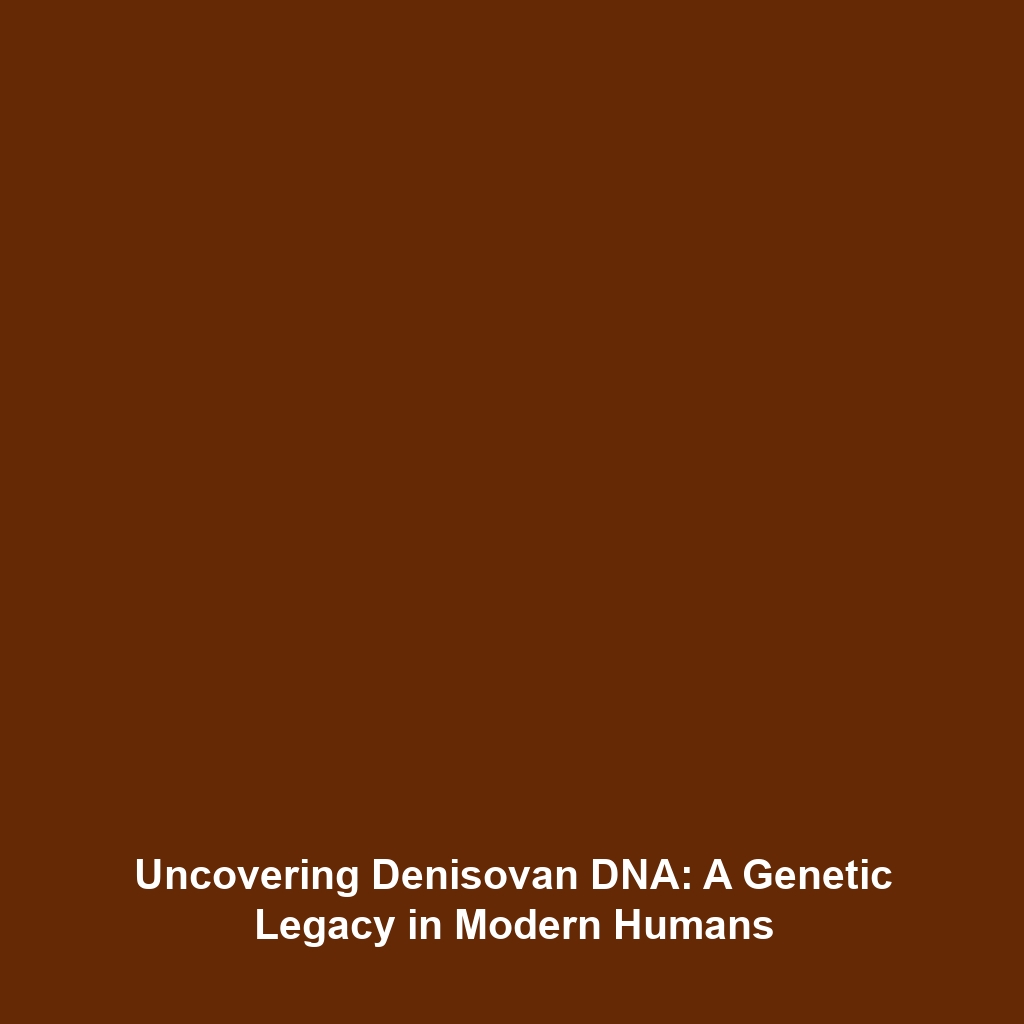Genetic Legacy: The Impact of Denisovan DNA on Human Evolution
Category: Human Evolution
Introduction
The discovery of Denisovan DNA in modern human populations, particularly in Melanesians and Indigenous Australians, unveils a profound chapter in the narrative of human evolution. This genetic legacy highlights the interbreeding events between archaic humans and ancestors of contemporary populations, showcasing the complex tapestry of human ancestry. Understanding the implications of Denisovan DNA provides critical insights into our evolutionary past, shedding light on how these interactions have shaped genetic diversity and adaptability in present-day humans.
Key Concepts
Denisovans and Their Discovery
Denisovans are an extinct group of hominins closely related to Neanderthals, identified through fossil evidence in Denisova Cave in Siberia. Their genetic legacy persists today, particularly among specific populations. Key concepts include:
- Genetic Intermingling: The interbreeding of Denisovans with early Homo sapiens.
- Population Genetics: Analyzing the genetic signatures left behind in modern populations.
- Adaptive Evolution: Understanding how inherited traits from Denisovans may confer advantages in contemporary environments.
Applications and Real-World Uses
How Denisovan DNA is Used in Human Evolution Studies
The study of Denisovan DNA has several real-world applications, enhancing our understanding of human evolution through:
- Medical Research: Identifying genetic factors that contribute to health conditions prevalent in descendants.
- Ancestral Studies: Tracing lineage and migration patterns of ancient populations.
- Conservation Biology: Informing conservation efforts by understanding genetic diversity within Indigenous populations.
Current Challenges
Challenges of Studying Denisovan DNA
The exploration of Denisovan DNA faces several challenges that affect its application within human evolution:
- Limited Fossil Record: The sparse fossil evidence of Denisovans restricts our understanding of their physiology and culture.
- Genetic Anomaly Interpretation: Complications arise when interpreting ancient genomic data and its effects on modern traits.
- Population Sampling Bias: The focus on specific populations may lead to an incomplete understanding of human genetic diversity.
Future Research and Innovations
Innovations in Testing and Analysis
Future research focused on Denisovan DNA promises significant breakthroughs in the field of human evolution, including:
- Next-Generation Sequencing: Enhanced techniques will allow for deeper analysis of ancient genomes.
- Comparative Genomics: Studies comparing Denisovan DNA across various modern populations to uncover further ancestral links.
- AI and Data Analytics: Utilizing machine learning to predict genetic implications in health and adaptability.
Conclusion
The genetic legacy of Denisovans continues to shape our understanding of human evolution, providing insights into the complexities of our ancestry and genetic makeup. As research progresses, it will be crucial to explore how these ancient genes influence modern health and adaptation. For more information, consider delving into related topics such as population genetics and ancient hominins.

Leave a Reply